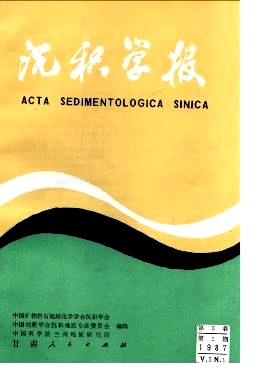GEOLOGICAL SIGNIFICANCE OF ILLITE OPENING INDEX
- Received Date: 1984-12-01
- Publish Date: 1987-03-10
Abstract: This paper deals with the samples from four profiles in Keshi Depression and Xi-nan Depression in the southwestern part of Talimu Basin.All the samples are obtained from marine mudstones and sandy-mudstones with the exception of a few ones from the Late Cretaceous and Early Tertiary limestone. Owing to the great thickness of covering strata in this region, it is difficult to get samples by drilling. So it seems impossible to observe the metamorphic degree of organic matter by studying various clay minerals in deep drilling cores. In this case, the author is trying to explain the paleogeographical environment and the problems about petroleum and gas geology of the Late Cretaceous and Early Tertiary in the southwestern part of Talimu Basin by measuring the diffraction maximum of illite (001). The author usually measures the crystallinity of illite by recognizing the shapes of the diffraction maximum of the mineral. The method of the acute index, which Dunoyer de Segonzac G. (1969) used to calculate illite crystallinity, needs special experiment equipment and conditions. Ren Leifu (1984) suggested that the "opening index" (Ns) be used to indicate the opening degree of diffraction maximum of illite. This method is easier to use in measurement, sample preparation and calculation. In fact, the index is not effected by the experiment equipment and condition, because it is only a scale. The formation of opening illite is related to the separation of K+ from the inter-layers. Based on the variation of opening index of illite from the four profiles, it is clear that its formation is related to some factors, such as the paleoclimate and paleogeographic environments. They are as follows: 1) the variation shows that the climate in the Late Cretaceous and Early Tertiary became dry by degrees;2)The samples in the same horizon from different locations in the basin have different opening indexes. So it is possible to infer the boundary of the sea basin;3) The variation indicates the ingression situation, and the maximum opening index is identical with the ingression. This is coincident with the data of field geology. Regular shape variation of diffraction maximum of illite in samples from weathering zones can still reflect the original gaological situation in their local site. This conclusion means that the rocks in this region do not undergo strong weathering and diagenesis. If the clay minerals in the cropped rocks have a very low grade of degeneration in weathering zones, samples from the cropping can be used to study the association and transformation of clay minerals and to determine the metamorphic degree of organic matter and the favourable area for oil or gas exploration. In three of the four profiles, the composition of clay minerals is dominated by illite and chlorite with the exception that the association of clay minerals in Simu-hana Profile is a little different from those three ones. Such a kind of clay minerals is not favourable for the formation of oil.
| Citation: | Wang Shiyi. GEOLOGICAL SIGNIFICANCE OF ILLITE OPENING INDEX[J]. Acta Sedimentologica Sinica, 1987, 5(1): 58-68. |






 DownLoad:
DownLoad: